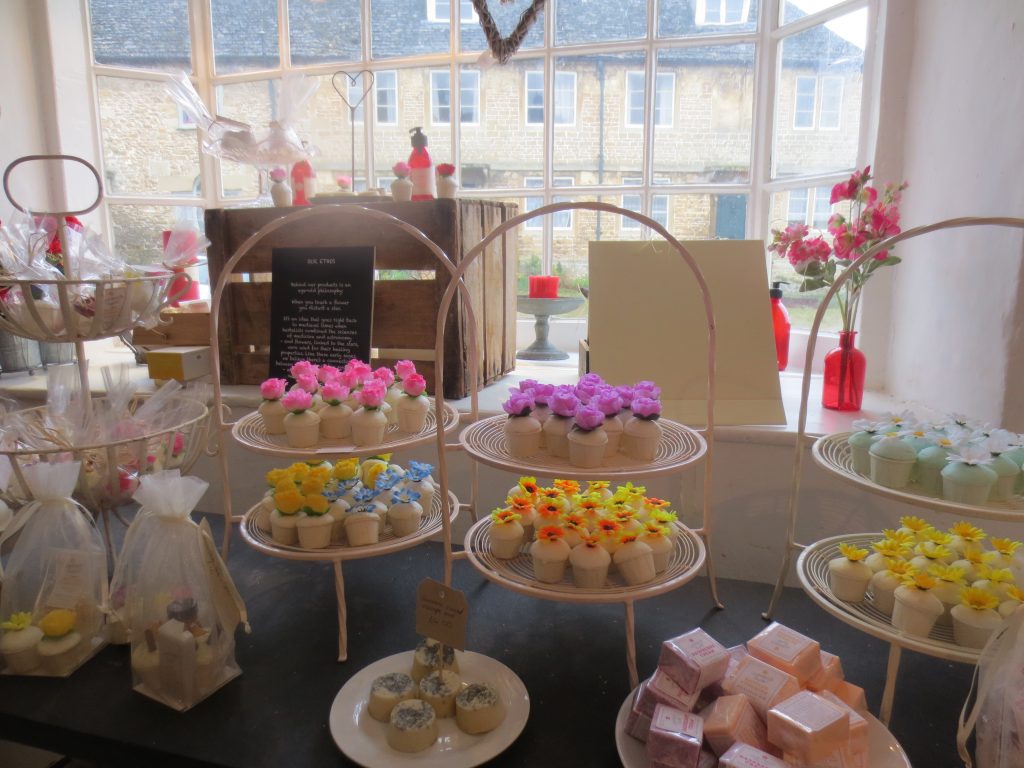 Quintessentially English, a village shop in Lacock, Wiltshire where soap poses as cupcakes
Quintessentially English, a village shop in Lacock, Wiltshire where soap poses as cupcakes
The Nose was in Bath last weekend to absorb the elegant eighteen century ambience. I never tire of the sweeping crescents and Palladian facades; of John Wood’s grand plan to make a small spa town the Rome of England. Even in the drizzle of a winter’s afternoon the cream stone buildings are warm and inviting. It was an impulse visit with no berth booked for the night. We’d just check in somewhere tempting in the late afternoon, after all who visits Bath on a wet day in February? Our plan went askew for the graceful reception rooms of Bath, which once resonated with the music of string quartets, were bulging with visitors and there was no room for us.
A slightly anxious rummage unearthed room at The Sign of the Angel in a National Trust village fifteen miles east. We typed Laycock into the sat nav and breathed a sigh of relief. Some 30 minutes later we were closing on the Severn. It seems the village name is pronounced Lay-cock but spelt Lacock… was an exasperating case of middle England’s prudish pronunciation taking us to a village in Yorkshire?
Arriving later than expected we were cheered no end by the prospect of a good meal. It appeared this was no ordinary pub, but a restaurant with rooms and… a decent looking wine list.
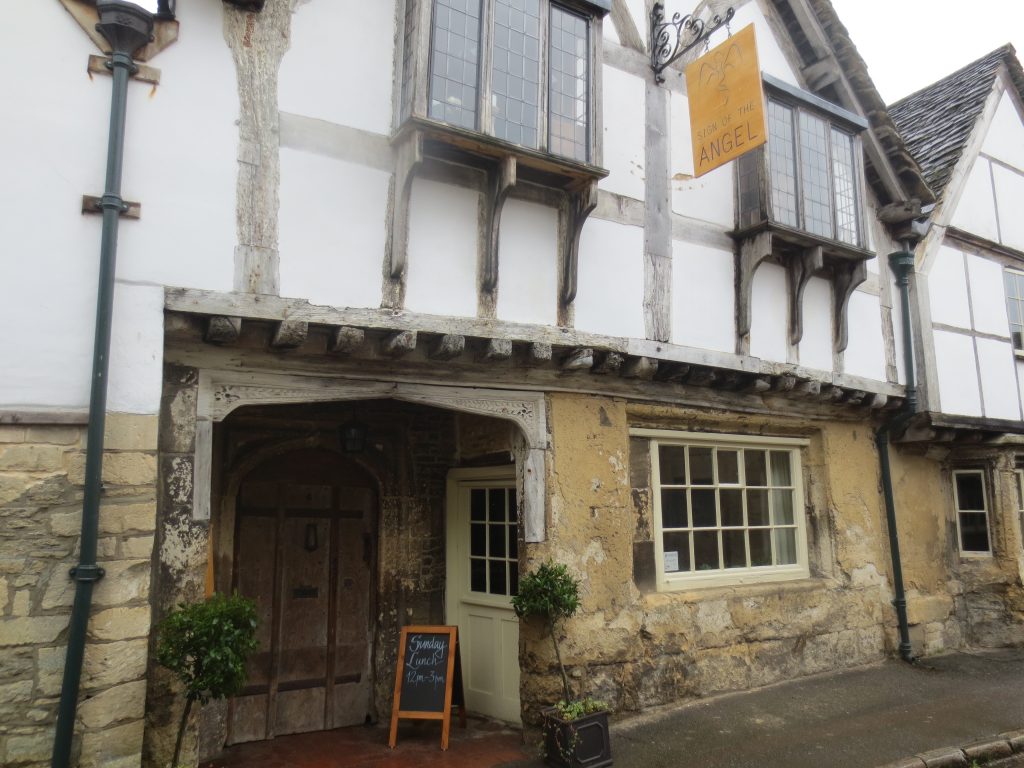
So let’s cut to the chase and fill in the background later. We warmed up beside a cavernous inglenook and perused the wine list. It was short and engaging…10 whites, 13 reds, assorted sparkling, a couple of rosé and pudding wines and all easily arranged by style.
The selection entitled ‘very dry, delicate white wine’ included a Picpoul de Pinet, an increasingly popular alternative to ubiquitous Pinot Grigio and Chablis, which were both available. A little more interest was added with an Albarino which makes aromatic wines with apricot flavours. The ‘herbaceous/aromatic’ selection sandwiched a spicy South African Viognier between the usual Sav-Blanc suspects from Malborough and Sancerre. Finally three juicy, fruit driven whites included Vavasour Pinot Gris from New Zealand.
The whites made up a rather a floral and spicy collection with a good range of weight, body and texture from the more citrus and light floral notes of the Picpoul to the richer Viognier and the warmer spice and perfume of the antipodean Pinot Gris.
Its simple but well done and all very affordable. The whites are very fairly priced from £17.50 to the Chablis and Sancerre which top the bill at £29. The reds follow suit (£16 to £40). The ‘juicy, medium bodied reds’ section offered six straightforward wines from different varieties or blends from five different countries – an Ozzie Merlot through Rioja to an old vine Carignan, which would be worth trying.
Given the wet winter night the ‘spicy, peppery and warming reds’ were more the ticket and it was heartening to see the reliable Ravenswood, Old Vine Zinfandel on the list at £25. However I was taken by two Italian reds. Enrico Serafino, Barbera d’Alba 2012 and Passori Rosso, Veneto 2014.
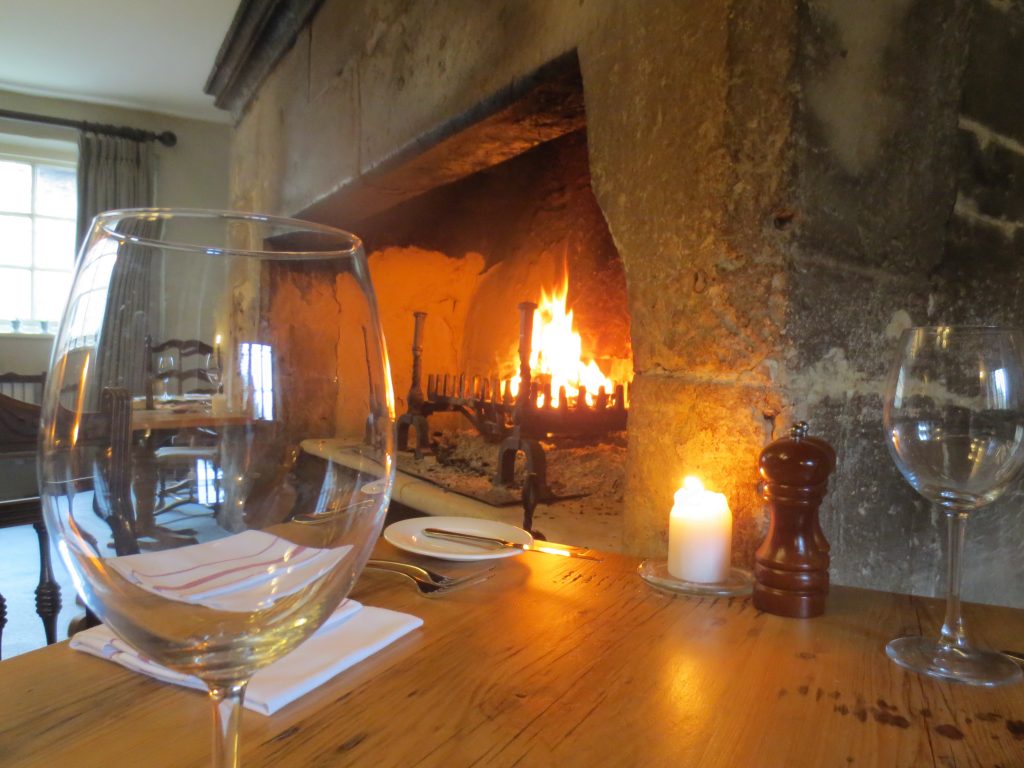
We plumped for the latter, a smooth, somewhat sumptuous wine with gorgeous ripe hedgerow fruit and notes of dark chocolate. It’s rich, but nicely contained. It’s full, but not heavy. It is nicely balanced with just sufficient acidity. The finish is a little dusty, not quite pristine, but forgivable for this is a morishly enjoyable bottle of wine. It’s a snip at £22 and is also sold by the glass. It’s made from 60% Merlot with Corvina, the local grape, making up the party. When ripe, the grapes are partially cut on the vine and left to hang, giving more richness and concentration as they shrivel. It would work a treat with game and anything meaty and fruity… so just the job with venison or duck in a sweet sauce. It even held up to the chocolate pud. No mean feat…
The list was topped off with Châteauneuf-du-Pape £32 (very reasonable) and Cru Bougeois Haut-Médoc £40 for those with more traditional tastes.
The sparkling ranged from a prosecco (£22) or £4.50 by the glass to a bottle of Taittinger for £47.
We tucked into the Passori Rosso accompanied by tasty cheese bread and very good walnut bread, dipped into good quality olive oil and balsamic vinegar and considered the menu. It was short, but with plenty to like. This was my sort of menu; six first courses, six main and six puds with some dishes of the day. Meat, veg and game come from a roll call of local farmers, butchers and artisan producers. All very heartwarming.
My first course of wood pigeon was slightly gamey, warm, pink and juicy with crunchy, caramelised hazelnuts, poached pear and a contrasting cold prune and Remy Martin sorbet. It was delicious. My companion had a warm feta cheese salad with a honey dressing, which was good, but I would like to have added a touch of fresh chile, a little mint and a squeeze of lime… but then I’m pretty picky. A unexpected and palate cleansing sorbet appeared next.
Of the eight main courses, three were fish, a big tick in my book and surprising to see so far from the coast, but that night I fancied fillet steak. Was the local farmer up to snuff? Yes indeed, but the real attraction was the treacled ox cheek.This was was intense, sweet and tender… a touch glutinous, but with great depth of flavour. The thyme potato and creamed cabbage merged somewhere in the middle of the plate. At £24 it was the most expensive dish on the menu. My companion had honey roasted belly of pork with creamed new potatoes and leek (£18). Again the flavours were excellent and he fairly wolfed down the pork belly.
Meanwhile the wine effortlessly soaked up everything – sweetness, richness, fruit, cheese and honey.
And so to pud. I’m a sucker for chocolate, but sadly the choco cheesecake creation had proved too popular and the cupboard was bare. However chef Jon Furby makes Tiramisu. As I dislike cake soaked in anything, I usually avoid this dish, but the efficient and informative front of house described it in such a way, I was tempted. There were other unusual dishes on the menu. Jon Furby, clearly a creative chef himself, encourages his staff to experiment and this evening there was some hocus pocus with rhubarb, as well as a sticky toffee apple pudding, home made ice creams and sorbets and a cheese platter.
I tempted providence with the Tiramisu and was rewarded. It was deconstructed to the point of resembling the dish only in its individual parts. From a crisp chocolate biscuit tuile tumbled broken chocolate brownie, chewy and dark with a trail of mascarpone smoothed beneath. It was topped with bitter expresso ice-cream. We all but licked the plate clean. A shot of expresso with a little chocolate filed with lemon curd had us heading upstairs, overtaken by food coma. The luxury of a restaurant with room… can’t beat it.
The rooms are simple and comfortable. It’s a medieval building, so the ceilings and doors are low, the floors slope and we hadn’t drunk that much. When brothers Jack and Tom Nicolas took on the lease from the National Trust 18 months ago, they redecorated in a traditional and comfortable style upstairs, where there is also an inviting sitting room for guests. The dining rooms have huge and wonderful inglenooks. With fires burning, they enrich the simple country setting.
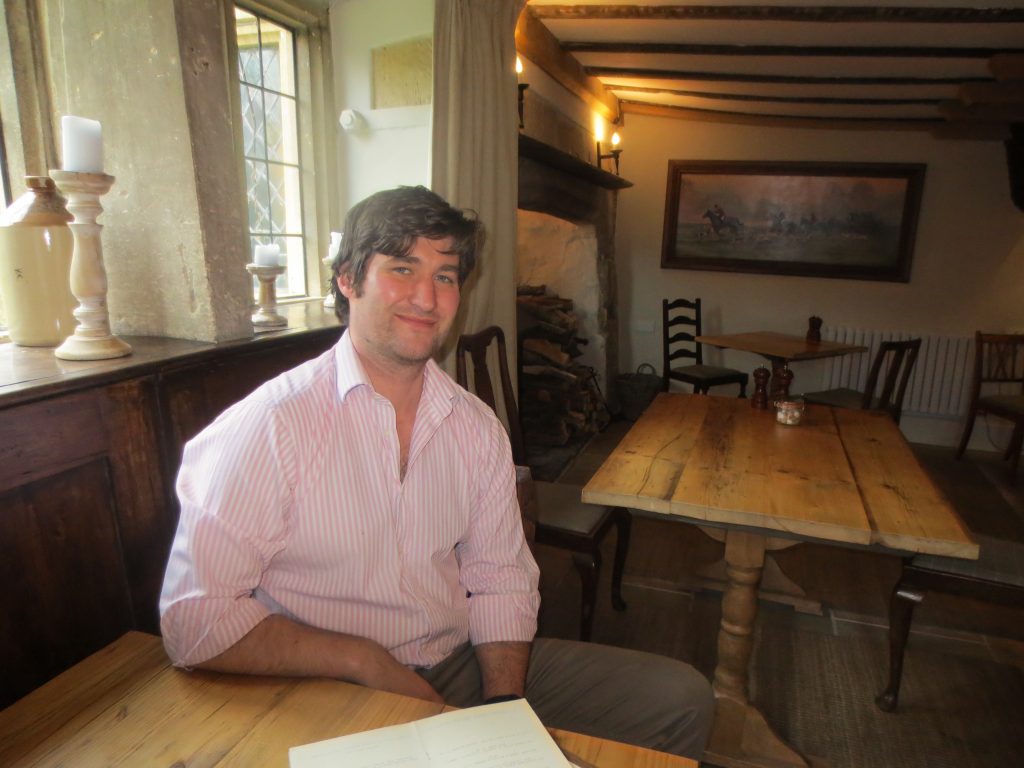
The brothers love food and wanted a challenge in addition to the 9 hole gold course they run down the road and teamed up with chef Jon Furby, a member of their club. There are other pubs in the village, so they wanted to do something a bit different. “We want people to come and stay here and have good food,” remarked Jack. “We keep wine list short deliberately. We want to list wines we will sell regularly with a few unusual wines, so that wine lovers will find something.”
“We also keep the menu short and interesting. We’re happy to see people struggling to chose between different dishes on such a short menu. We can keep everything really fresh. We make it and sell it. There’s no waste.” On the flip side, there may not be enough to go around. We were unlucky with the pudding, but at breakfast the salmon had also swum off the menu by the time we had come back from a muddy morning run.
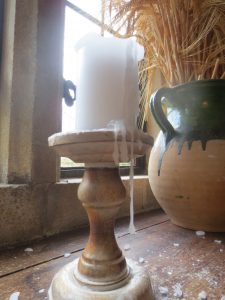 Jack added “We’re not influenced by other countries really. We’re modern British. We change the menu every three months in time with the season, as well as having special dishes. We have quite a few gluten free dishes, as customers seem to want this.”
Jack added “We’re not influenced by other countries really. We’re modern British. We change the menu every three months in time with the season, as well as having special dishes. We have quite a few gluten free dishes, as customers seem to want this.”
The breakfast menu was also short: a full English, the elusive salmon and scrambled eggs, a sausage ciabatta and porridge. The bread was good. The coffee was spot on. They indulged my coffee addiction with a trio of double shot expresso.
I certainly recommend a visit to The Sign of the Angel and while you’re there scoot round the picture perfect village. National Trust sensibilities ensure no unsightly modern intrusions. The tithe barn is impressive. There are a few touristy shops, of the ‘cute’ variety, a pottery and a bakery/cafe which sells Lacock lardy cake, a local speciality. It’s worth checking out Lacock Abbey, home to Fox Talbot, who invented photography. The Trust’s exhibition charting the race to create the first reproducible image is well thought out. The house seems somewhat sad and shabby, but the remains of the abbey itself, the glass houses and the ale house were more interesting.
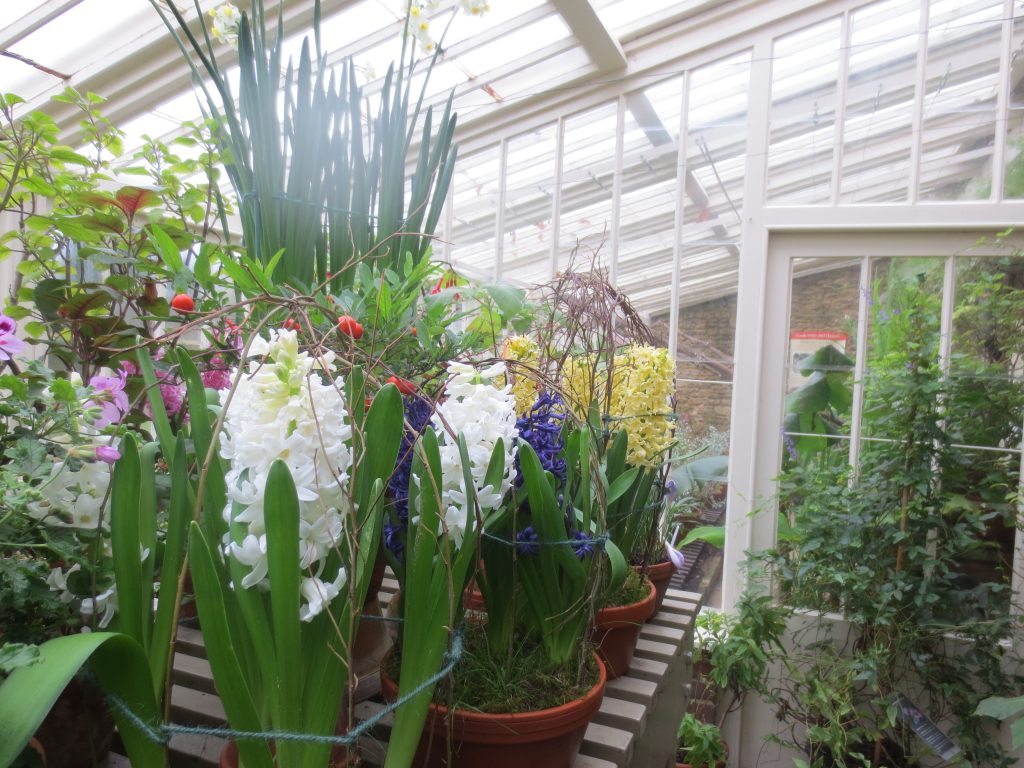
The hoards of families visiting the village and the abbey were puzzling. Lacock has been used as a backdrop for numerous TV and film productions including BBC’s Cranford Chronicles and Pride and Prejudice, but this was the Harry Potter effect. By lunchtime the cafes and pubs were packed with wannabe Hogwarts wizards. It was time to magic ourselves back to London.
To book a room (£120-£140) or a table go to www.signoftheangel.co.uk or call 01249730230. Our meal was a very reasonable £90 for two including wine. Just make sure you tap Lacock Wiltshire into the sat nav.
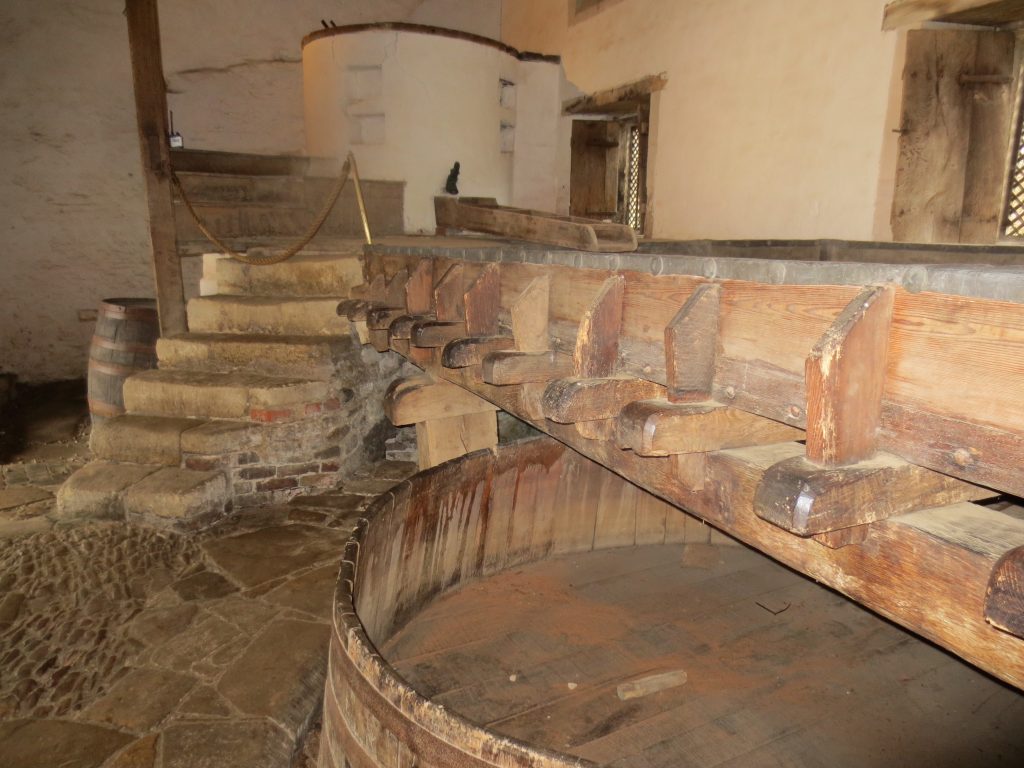 The alehouse at Lacock Abbey.
The alehouse at Lacock Abbey.

